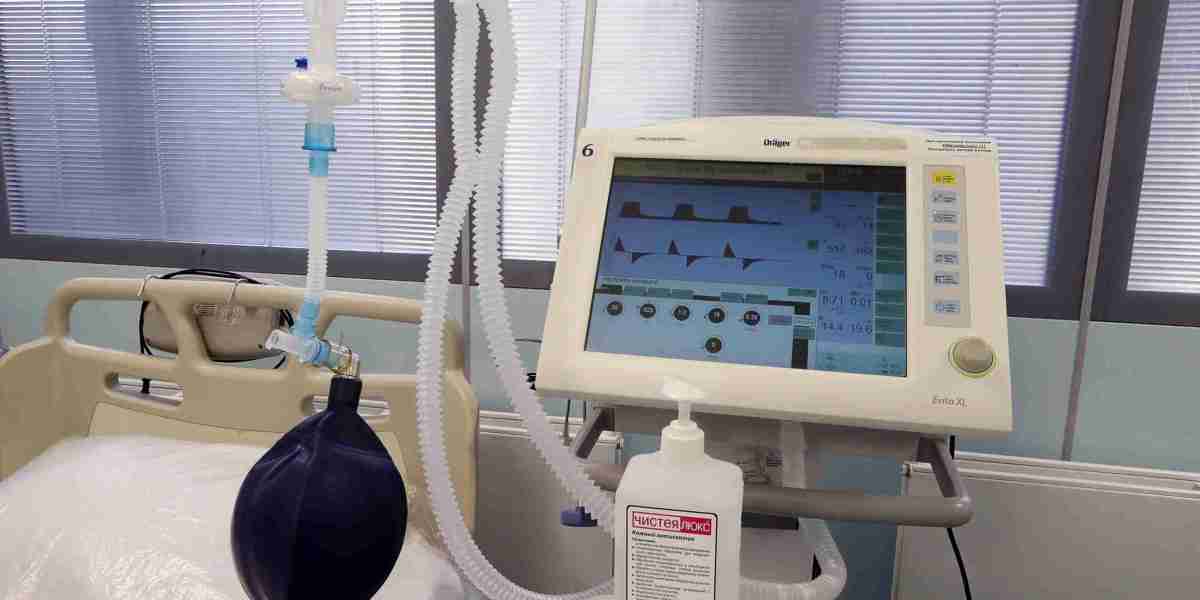The global ventilator market has witnessed significant growth, particularly due to the COVID-19 pandemic, which highlighted the critical importance of these life-saving devices. However, this market faces a series of challenges and threats that could impact its development, supply, and distribution. As we move into the post-pandemic era, addressing these threats will be crucial for ensuring the reliability and accessibility of ventilators worldwide. Let’s explore some of the major threats the ventilator market faces today.
1. Supply Chain Disruptions
One of the most significant threats to the ventilator market is supply chain disruptions. Ventilator production relies on a vast range of components, many of which are sourced from multiple global suppliers. The pandemic exposed vulnerabilities in this global supply chain, with shortages of essential components such as microchips, sensors, and valves. Such disruptions are still ongoing in many regions, affecting the production and timely delivery of ventilators.
Further, transportation bottlenecks and increasing raw material costs have placed additional pressure on manufacturers. This can result in delayed production schedules and increased prices, making ventilators more expensive and less accessible, especially in low- and middle-income countries where healthcare systems are already under strain.
2. Regulatory Hurdles
Regulation is another major challenge the ventilator market faces. In the wake of the pandemic, many regulatory agencies, such as the FDA and EMA, fast-tracked approvals for emergency ventilator devices. While this was necessary for addressing the immediate crisis, some manufacturers produced substandard devices to meet the unprecedented demand. As we move forward, regulatory bodies are tightening their standards, making it more difficult for manufacturers to bring new devices to market quickly.
Meeting regulatory requirements can also be an expensive and time-consuming process. Small and mid-sized manufacturers, in particular, may find it difficult to comply with the stringent standards, limiting competition and innovation in the ventilator market.
3. Competition from Non-traditional Manufacturers
The ventilator market has seen an influx of non-traditional manufacturers, including companies from unrelated industries such as automotive and electronics. While these companies have been able to pivot and produce ventilators quickly during times of high demand, their entrance into the market poses a threat to established manufacturers. The sudden surge of new players can result in market oversaturation, driving down prices and creating an environment of intense price competition.
While competition can benefit consumers in some cases, it can also lead to a decrease in product quality. If companies with limited experience in the medical device industry prioritize speed over quality, there could be risks associated with the safety and effectiveness of ventilators.
4. Technological Challenges
As medical technology evolves, ventilator manufacturers are under pressure to develop more advanced and reliable devices. Innovations like artificial intelligence, cloud connectivity, and remote monitoring systems have the potential to revolutionize the ventilator market. However, the integration of these technologies presents significant challenges, particularly in terms of compatibility and cybersecurity.
Ventilators that rely on internet connectivity or AI-powered decision-making systems may be vulnerable to cybersecurity threats. A breach in security could compromise patient data or even render a ventilator unusable during critical care situations. Additionally, integrating advanced technologies into ventilators requires substantial investment in research and development, which many companies may not have the resources to manage.
5. Growing Cost of Healthcare and Limited Reimbursement
Ventilators are expensive pieces of medical equipment, and as healthcare costs continue to rise globally, budget constraints could limit the purchasing capacity of hospitals and healthcare providers. Governments may also reduce or reallocate funding for ventilators, especially if demand stabilizes post-pandemic.
Limited reimbursement policies for ventilator use also pose a financial burden on hospitals and health systems. In some regions, insurers and government programs do not adequately cover the full cost of ventilators, further complicating procurement efforts.
Moreover, ventilator manufacturers may face pricing pressure from healthcare providers seeking to reduce costs. This, combined with rising production costs, could result in squeezed margins for manufacturers, limiting their ability to invest in innovation and quality improvement.
Conclusion
The ventilator market, despite its critical importance, faces numerous threats that could impact the availability, affordability, and reliability of these devices. Supply chain disruptions, regulatory hurdles, increased competition, technological challenges, and growing healthcare costs all contribute to the uncertainty surrounding this industry. To ensure continued access to high-quality ventilators, stakeholders in the healthcare sector must address these issues collaboratively and proactively.




